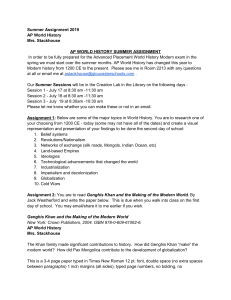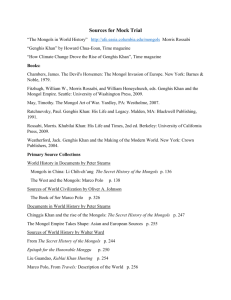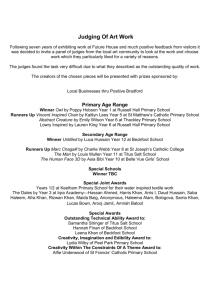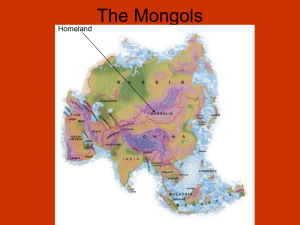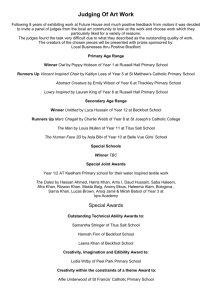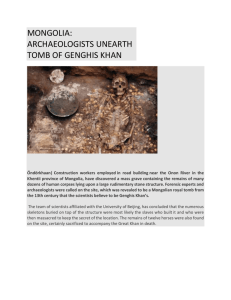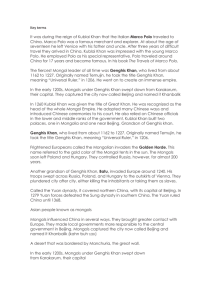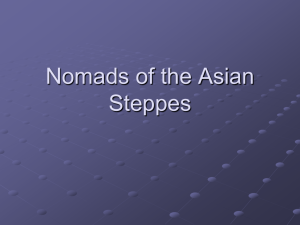AP World History Free Response Question
advertisement
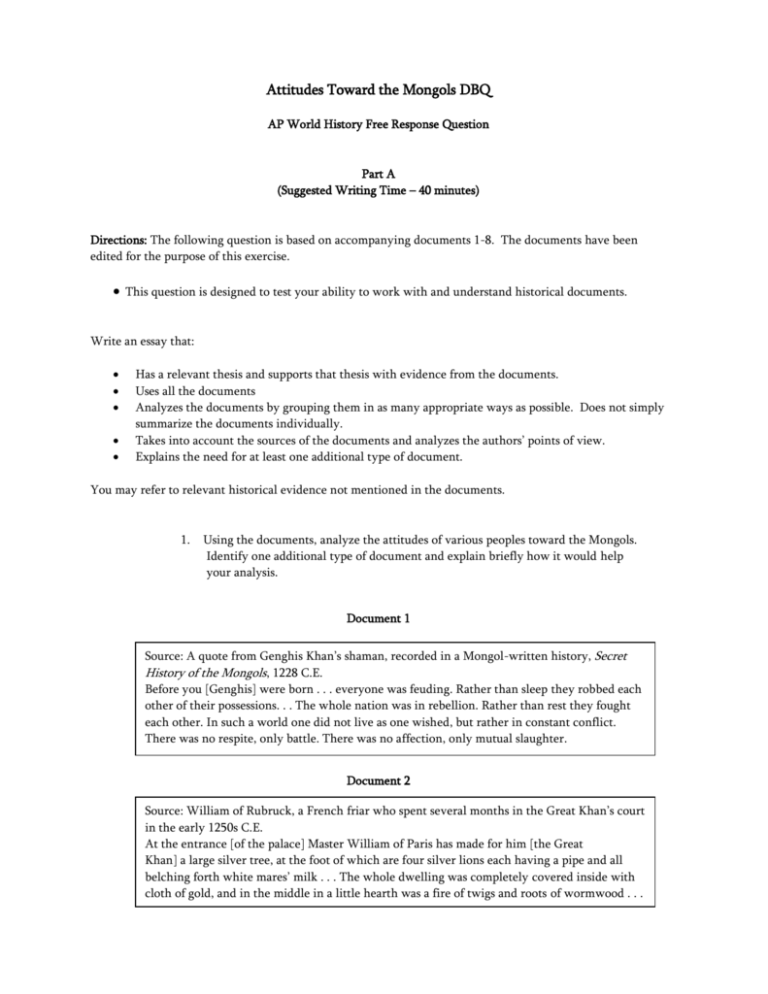
Attitudes Toward the Mongols DBQ AP World History Free Response Question Part A (Suggested Writing Time – 40 minutes) Directions: The following question is based on accompanying documents 1-8. The documents have been edited for the purpose of this exercise. This question is designed to test your ability to work with and understand historical documents. Write an essay that: Has a relevant thesis and supports that thesis with evidence from the documents. Uses all the documents Analyzes the documents by grouping them in as many appropriate ways as possible. Does not simply summarize the documents individually. Takes into account the sources of the documents and analyzes the authors’ points of view. Explains the need for at least one additional type of document. You may refer to relevant historical evidence not mentioned in the documents. 1. Using the documents, analyze the attitudes of various peoples toward the Mongols. Identify one additional type of document and explain briefly how it would help your analysis. Document 1 Source: A quote from Genghis Khan’s shaman, recorded in a Mongol-written history, Secret History of the Mongols, 1228 C.E. Before you [Genghis] were born . . . everyone was feuding. Rather than sleep they robbed each other of their possessions. . . The whole nation was in rebellion. Rather than rest they fought each other. In such a world one did not live as one wished, but rather in constant conflict. There was no respite, only battle. There was no affection, only mutual slaughter. Document 2 Source: William of Rubruck, a French friar who spent several months in the Great Khan’s court in the early 1250s C.E. At the entrance [of the palace] Master William of Paris has made for him [the Great Khan] a large silver tree, at the foot of which are four silver lions each having a pipe and all Document 3 belching forth white mares’ milk . . . The whole dwelling was completely covered inside with cloth of gold, and in the middle in a little hearth was a fire of twigs and roots of wormwood . . . Document 3 Source: Odoric of Pordenone, a Catholic missionary to the Great Khan’s court, Report, 1330. The court of this lord [the Great Khan] is well ordered, namely ranked into tens, hundreds, and thousands, with all their assigned places and all answerable to one another lest any defect ever be found in the performance of their duties or in any other matter. Document 4 Source: A Hungarian Christian bishop who held two Mongol captives, 1257. I asked them about their belief; and in few words, they believe nothing. They began to tell me, that they were come from their own country to conquer the world. They make use of the Uighur letters, because formerly they had none of their own. They eat frogs, dogs, serpents and all things . . . Their horses are good but stupid. Document 5 Source: John of Plano Carpini, Italian monk who spent several months in the Great Khan’s court during the 1240s C.E. They pay their lords more respect than any other people, and would hardly dare to lie to them. Their women are chaste. Wars, quarrels, the infliction of bodily harm, and manslaughter do not occur among them, and there are no large-scale thieves or robbers among them . . . They treat one another with due respect; they regard each other almost as members of one family, and, although they do not have a lot of food, they like to share it with one another. They are extremely arrogant toward other people, [and] tend to anger . . . easily. They are the greatest liars in the world in dealing with other people. They are crafty and sly . . . [and] have an admirable ability to keep their intentions secret. They are messy in their eating and drinking and in their whole way of life, [and] cling fiercely to what they have. They have no conscience about killing other people . . . If anyone is found in the act of plundering or stealing in the territory under their power, he is put to death without any mercy. Document 6 Source: Aniko, a painter from Nepal working at the Khan’s summer palace, Portraits of Kublai Khan and his wife, 1280. Document 7 Source: Juvaini, a Persian historian, 1260. [My homeland was formerly] the rising-place of felicities and charities, the location of desirable things and good works, the fount of learned men…but today...the earth hath been divested of the adornment of the presence of those clad in the gown of science and those decked in the jewels of learning and letters. In the Muslim countries devastated by Genghis Khan, not one in a thousand of the inhabitants survived. Document 8 Source: Ghazi, Muslim chronicler, 1270. Under the reign of Genghis Khan, all the countries . . . enjoyed such peace that a man might have journeyed from the land of the sunrise to the land of sunset with a golden platter upon his head without suffering the least violence from anyone

